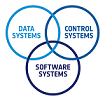This presentation will discuss the main challenges related to Autonomy and FDIR for Space Missions in a changing environment: constellations, debris management, complex integrated equipment, off-the-shelf equipment, increased availability requirements, human safety. AOCS/GNC functions are required to answer at the same time very high performance requirements and high resilience to ensure...
The goal of this presentation is to present the state-of-the-art and perspectives of autonomy and GNC/FDIR coupling on current and near-future missions. We will clarify the need for increased autonomy and the main development axes identified to optimise the future missions.
This presentation will focus on:
· The novel FDIR handbook and its links toward GNC/FDIR coupling validation
· The...
In our latest ESA activity, a flight test campaign was carried out in a representative environment of a Mars Landing for the verification of the Hybrid Camera-Lidar Hazard Detection and Avoidance System (H2DAS). For that purpose, a large multicopter platform was developed to carry aloft the Avionics Test Bench (ATB) experiment.
The multicopter-based flight test platform (FTP) can execute...
Current and future trends for launch vehicles include increasingly stringent requirements for mission responsiveness and adaptability. In a previous FLPP activity we developed a tool to analyze state-of-the-art approaches for on-board optimized guidance. FORCES Pro was used in the backend to generate fast embeddable optimization solvers. This paper describes the implementation of the...
GNC for In Orbit Assembly” (IOA-GNC) is an ESA TRP project by a consortium led by GMV and targeting the study of autonomous assembly of large structures in space, using a modular design approach, to obtain a final structure that could not be achieved by means of a single element. The main applied principles are: use of advanced control techniques to perform rendezvous/mating operations in...
The use of electric propulsion for orbit raising is a key factor for reducing the cost of access to space, for telecommunication satellites going to geostationary orbit (E172B, SES14, SES12) as well as for LEO satellites climbing to their operational altitude. The increased time-to-orbit is however a downside, with additional operation costs from ground station usage and personnel. Moreover,...
GENEVIS presents a full-software, Vision-Based Navigation solution dedicated to precise lunar landing. The outputs of two image processing algorithms, providing information on relative and absolute positioning respectively, are hybridized with inertial measurements. GENEVIS validates the performance and robustness of the solution with simulations, the CPU load performance on space-graded...

